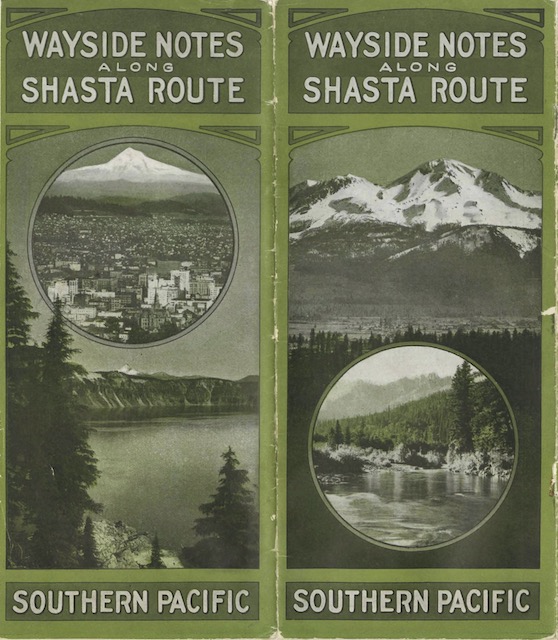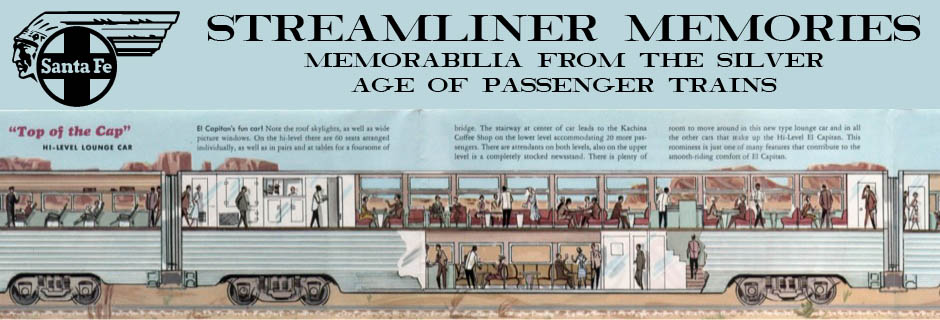We’ve previously seen a 12-page booklet from 1950 describing sights along the Southern Pacific’s Shasta Route. This one is from three decades earlier and fills 16 pages. Unlike the later booklet, this one includes more than 80 photos which, though small, are crisp and detailed. Also like the later booklet, the main cover (as shown below) is the back cover, not the front, a format SP used for many of its timetables and booklets.
 Click image to download a 7.7-MB PDF of this 16-page booklet.
Click image to download a 7.7-MB PDF of this 16-page booklet.
The booklet is dated November 24, 1920 and includes 1920 population data for the cities along the route. This reveals that the Census Bureau was a lot faster at publishing census data in the days before computers and electronic tabulations, as 2020 data for cities wasn’t available until early in 2021.
The booklet is arranged from north to south, starting with Seattle, which is described as “thoroughly progressive.” That’s still true, but the word meant something quite different in 1920 than in 2021. Southern Pacific rails didn’t start until Portland, and a photo shows three trains in Portland’s Union Station, at least one of which looks like a Southern Pacific train.
Another photo shows Portland’s Steel Bridge, the city’s second-newest crossing of the Willamette River at the time this booklet came out. This bridge has a lower deck for trains and an upper deck for automobiles and streetcars (now light rail) and is unique in that each deck can be independently raised and lowered to allow for river traffic. The bridge was built and is still owned by the Union Pacific Railroad.
